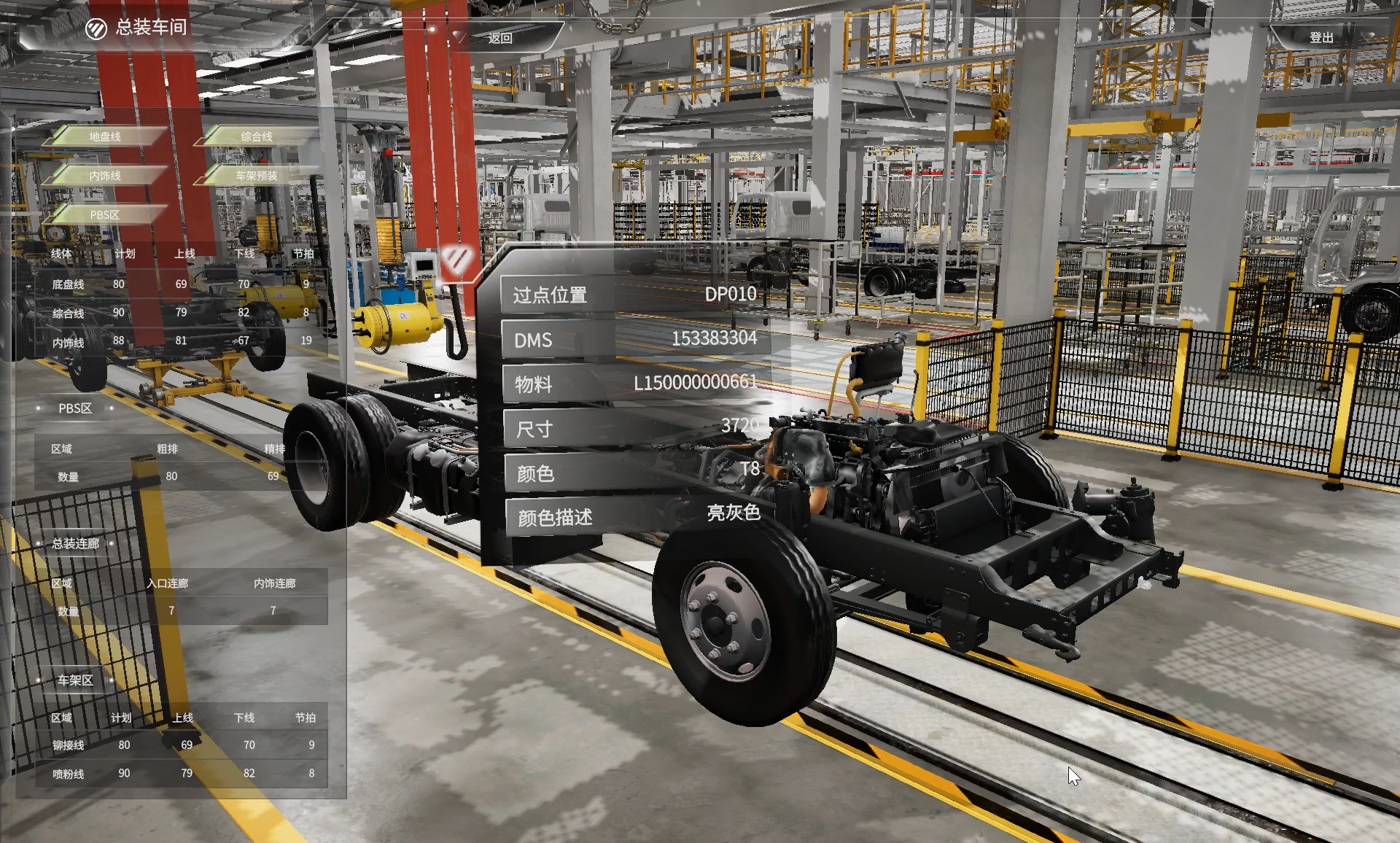FactVerse + Omniverse
FactVerse Connector for NVIDIA Omniverse
FactVerse Connector seamlessly integrates DataMesh’s real-time data fusion and digital twin technology with NVIDIA Omniverse’s advanced simulation and rendering capabilities. Serving as the ground truth, FactVerse provides accurate and reliable data that facilitates the creation of high-fidelity 3D environments and AI training. This powerful connection optimizes workflows across various industries by bridging physical assets with digital intelligence. By ensuring that digital models are grounded in real-world data, the FactVerse Connector enhances design, operations, and training processes, empowering businesses to innovate and operate more efficiently.
Seamless Integration with Advanced Simulation
FactVerse Connector effortlessly links DataMesh’s real-time data fusion and digital twin technology with NVIDIA Omniverse’s cutting-edge simulation and rendering capabilities. This seamless integration provides a unified platform that enhances workflow management and accelerates project development across various industries.
Optimized Workflows and Efficiency
By bridging physical assets with digital intelligence, the FactVerse Connector streamlines design, operations, and training processes. This integration enables businesses to optimize workflows, reduce redundancies, and operate more efficiently, resulting in significant time and cost savings.
Ground Truth Accuracy
Serving as the ground truth, FactVerse ensures that all digital twin models and simulations within Omniverse are based on precise, real-world data. This guarantees highly accurate and reliable 3D environments and AI training, enhancing the fidelity and effectiveness of virtual simulations.
Enhanced Innovation and Decision-Making
FactVerse Connector empowers businesses to leverage accurate data-driven insights within NVIDIA Omniverse, fostering innovation and enabling informed decision-making. This enhanced capability supports the development of smarter, more efficient operations and drives competitive advantage in the market.
Connecting Digital Twin Data and Apps
Data Import
- Mainstream structured and unstructured data support
- Automatic incremental content extraction
- Existing CAD, BIM resource utilization
- Cloud-based automatic/semi-automatic optimization
- Mobile Ready
- Metadata Mapping
Data Mapping
- Maps device status data, report data, kanban data, etc. through Digital Twin interface.
- Quickly interface with SCADA, MES, ERP, various IoT platforms, and timing databases through Data Fusion Service (DFS).
Simulation
- FactVerse SDK
- Business logic, simulation plug-in development
- Invoke digital twin and business resources in scenarios
- Rapidly build professional scenarios for predictive maintenance, operation optimization, etc.
Distribution
- DataMesh One, Inspector, Checklist, Simulator, Web or homegrown applications
- Support for all types of displays, XR glasses, handheld devices
- Invoke cloud-based digital twin scenarios across geographies
- Improve the efficiency of frontline staff

The digital twin template layout and behavioral tree design provided by DataMesh FactVerse dramatically simplifies data platform issues in digital twin factory projects. Multiple developers can use the same interface to access the standardized layout and logical data to develop different business applications without worrying about the underlying data connectivity issues. The cost of modifying and adjusting layouts to follow business changes is also dramatically reduced.
Digital Factory Project
Project Manager
FAQ
How to implement DataMesh Checklist in my organization?
Implementing DataMesh Checklist in your organization involves identifying the initial processes and objectives (e.g., reducing errors, improving collaboration), assessing your existing systems (such as ERP, MES, or IoT platforms) for integration points, gathering data and digital twins to link with work orders, defining user roles and permissions, and collaborating with DataMesh or a trusted partner to configure Checklist. After a pilot phase for feedback and refinement, provide brief training sessions to ensure team adoption and demonstrate benefits like centralized data, reduced errors, and real-time progress tracking. Finally, monitor key metrics (e.g., completion time, error rate), optimize workflows as needed, and expand Checklist usage or advanced features (including optional AR support) to further enhance collaboration, efficiency, and data-driven decision-making.
What is the licensing model of DataMesh Checklist?
DataMesh Checklist’s licensing model consists of three components: Client Licenses for individual user access, a Checklist Service (FactVerse Node License) enabling the service on the FactVerse platform, and an optional Service Fee for customizing or extending Checklist functionality to meet specific organizational needs. This structure provides flexibility in scaling user access and feature enhancements, ensuring that each organization can tailor DataMesh Checklist to best fit its workflow and budget.
How can I integrate data from other systems?
DataMesh Checklist can seamlessly pull in data from various enterprise systems by leveraging DataMesh FactVerse DFS (Data Fusion Services). Through DFS, organizations can connect platforms like Honeywell Forge and IBM Maximo, consolidating real-time operational data, equipment status, and work orders into a unified view. This integration ensures consistent, accurate information for end-to-end workflow execution. By synchronizing data sources within the FactVerse platform, Checklist provides a single “system of systems” approach, enabling automated alerts, streamlined maintenance schedules, and efficient, data-driven decision-making across diverse industrial environments.
Which AR hardware is supported? Any recommendation?
DataMesh Checklist currently supports iPad and iPhone for AR-enabled workflows, offering users a portable, easy-to-use platform for on-site guidance. While these devices cover most frontline needs today, DataMesh also envisions leveraging next-generation AR glasses in the future. As AR hardware continues to evolve, we recommend enterprises remain flexible in their device strategy, ensuring seamless upgrades to newer, more immersive solutions that further enhance operational efficiency and collaboration.